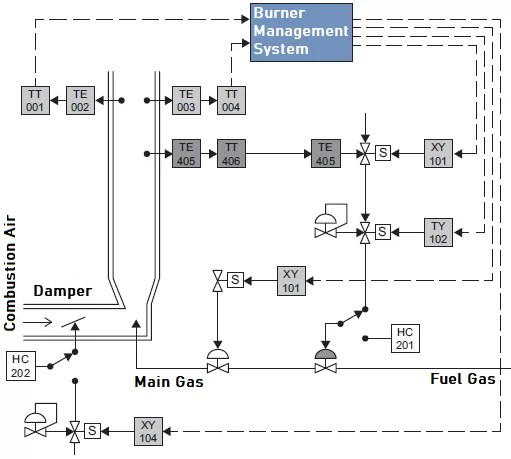Demand Mode Safety Function
Demand mode safety function is where a specified action is taken in response to process conditions or other demands. In the event of a dangerous failure of the SIF, a potential hazard only occurs in the event of a failure of the process of BPCS (Basic Process Control System).
Demand mode safety function is characterized by the following features:
- It is typically separate from the process.
- Failure of the safety function results in loss of protection, but is not itself hazardous.
- The frequency of demands placed upon it is low, less than once per year.

Demand mode safety functions include:
- Process shutdown (PSD).
- Emergency Shutdown (ESD).
- High Integrity Pressure Protection Systems (HIPPS).
Continuous Mode Safety Function
Continuous mode safety function is where in the event of a dangerous failure of the SIF, a potential hazard will occur without further failure unless action is taken to prevent it.
Continuous mode safety function is characterized by the following:
- It typically offers some control function.
- Failure of the safety function usually leads to a hazardous situation.
- The frequency of demands placed upon it is high, more than once per year even continuous.
Continuous mode safety functions typically include burner management and turbine control systems.

The figure above shows a burner management system (BMS) which is used to control a furnace. The system is used to control the fuel gas and combustion air into the furnace and monitors the burner flame with flame detectors. On condition of flame out, the BMS must shut OFF the fuel gas to prevent a build-up and possible explosion. In the same way, before lighting, the burner must be purged to ensure that gas has not accumulated within the furnace due to seepage past the valves or control failures. Therefore, the BMS must provide control through the start-up sequence, purging adequately and it must also monitor operation after lighting. This system illustrates a continuous mode safety function.
Recommended: The Ultimate Guide to Electrical Maintenance
Related articles:
- Hazardous Locations Classifications
- Methods of Protecting Instruments from Explosive Atmospheres
- Safety Function in a Machine Control System
- NEMA & IP Ratings for Enclosures
- What is Safety Related Control System (SRCS)?

Leave a Reply
You must be logged in to post a comment.